Relationship Spread #1
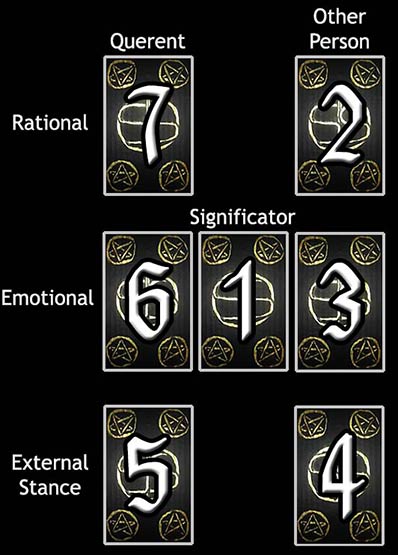
Difficulty: Easy
This tarot spread is easy to read, like a convenient chart. In this spread, court cards generally indicate actual people with the same characteristics. Knights (or corresponding princes, but not kings) and queens are meant to represent actual men and women in this tarot spread. Look for patterns in the cards as always.
Card #1 is the overall significator of the relationship. The two columns on either side of the significator characterise each individual's role in the relationship. The relationship does not have to be romantic. In fact, it could be a relationship between a person and a group, or even how two groups relate.
The top row, cards #7 & #2, is about the conscious thoughts of each person, or what they think about the relationship and likewise how they view their partner.
The middle row, cards #6 & #3, reveals the way each individual feels about the other. Emotional awareness corresponds to a person's unconscious thoughts that run deep, affecting a person in ways he or she is not fully aware of.
The bottom row, cards #5 & #4, represents the way each person behaves, in other words the stance taken regarding the relationship. The way a person acts may be genuine, but sometimes people are phony and manipulative, so it is best to weigh this card against the other person's cards to determine how they match up.
Your Relationship #1 Reading
| You | Other Person | ||
| Thought | 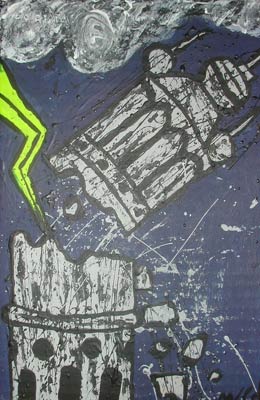 XVI. The Tower |
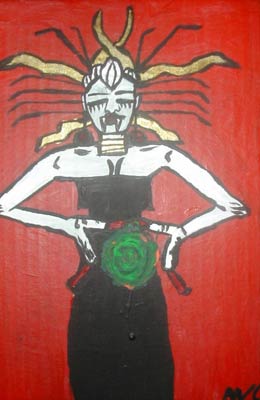 II. The Priestess |
|
| Emotion | 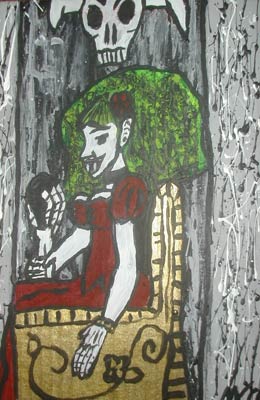 III. The Empress |
The Significator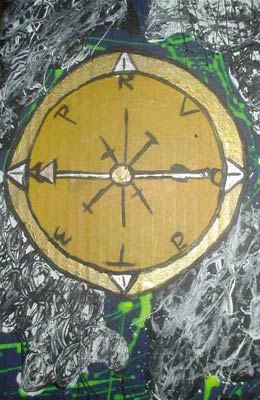 X. The Wheel of Fortune |
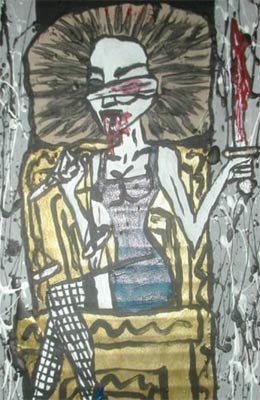 XI. Justice |
| External Stance | 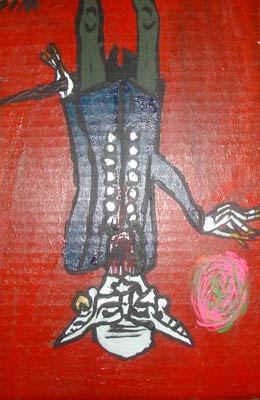 I. The Magician |
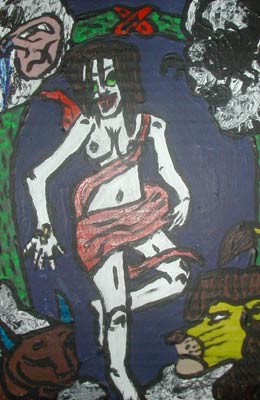 XXI. The World |

The Significator
X. The Wheel of Fortune
Reversed
Symbolism:
The Wheel of Fortune appears as a rotating wheel carved from black obsidian, inscribed with arcane runes glowing faintly in red and gold. Around the wheel, shadowy figures—some triumphant, others despairing—are caught in its orbit, symbolizing the cyclical nature of fate. At its center, a single, unblinking eye peers outward, embodying the watchful presence of destiny and the unpredictable forces that govern life.
Meaning:
The Wheel of Fortune represents cycles, change, and the influence of fate. It reminds you that life is constantly shifting between highs and lows, and adaptability is key to navigating these changes. When this card appears, it often signals a turning point, a shift in fortune, or the hand of destiny at work. It encourages you to seize opportunities while being mindful of the bigger picture.
Reversed, the Wheel warns of resistance to change, misfortune, or feeling stuck in a negative cycle. It suggests learning from setbacks to break free and regain control.
Keywords:
Reversed: Stagnation, resistance, bad luck, missed opportunities, instability, lack of control.

The Querent's Thoughts
XVI. The Tower
Symbolism:
The Tower is shown as a crumbling gothic spire, struck by lightning and engulfed in flames. Figures are seen falling from the heights, their faces contorted in shock and despair. The dark sky above swirls with storm clouds, while the ground below splits open, exposing molten lava. Amid the destruction, a single raven perches on the rubble, symbolizing the potential for renewal through upheaval.
Meaning:
The Tower represents sudden upheaval, revelation, and the breaking down of false structures. It signals a dramatic, often unexpected event that shakes the foundations of your life, forcing you to confront harsh truths. While challenging, this card ultimately clears the way for genuine growth and transformation.
Keywords:
Upright: Upheaval, revelation, chaos, destruction, truth, transformation, awakening.

The Other Person's Thoughts
II. The Priestess
Symbolism:
The High Priestess holds a luminous sphere of power close to her womb, symbolizing the nurturing of secrets and inner knowledge. She is cloaked in flowing robes of dark and silvery hues, blending shadow and light to represent duality and balance. Behind her, the faint outline of a moonlit landscape hints at the cycles of nature and the mysteries of the subconscious. Her gaze is serene yet penetrating, as though she sees through to the core of truth.
Meaning:
The High Priestess signifies intuition, hidden wisdom, and the power of stillness. She encourages introspection and the pursuit of knowledge that lies beneath the surface. This card often appears when it is time to listen to your inner voice and trust the subtle cues of your environment. It may suggest secrets yet to be revealed or a need to delve deeper into your own emotions and spirituality.
Keywords:
Upright: Intuition, mystery, inner wisdom, reflection, subconscious, patience, hidden truths.

The Querent's Emotions
III. The Empress
Symbolism:
The Empress sits upon her throne, her presence commanding yet nurturing. She holds the Hand of Glory, a macabre artifact symbolizing her power to claim whatever she desires. Her surroundings are lush and fertile, with dark roses blooming amidst the decay—symbols of beauty and abundance arising from even the grimmest conditions. Her expression is one of calm authority, radiating life-giving energy.
Meaning:
The Empress represents creation, fertility, and the nurturing aspects of life. She signifies abundance and the ability to bring ideas, projects, or relationships to fruition. This card invites you to connect with your creative or maternal instincts and embrace the cycles of growth and renewal. It may also point to emotional or physical abundance and a celebration of life's pleasures.
Keywords:
Upright: Fertility, abundance, creation, nurturing, beauty, growth, motherhood, diplomacy.

The Other Person's Emotions
XI. Justice
Symbolism:
Justice is depicted as a pale, vampiric figure holding a pair of scales in one hand and a blood-stained sword in the other. One side of the scale holds a black feather, while the other holds a human heart, symbolizing the balance between moral accountability and emotional truth. Her blindfold is sheer, hinting at impartiality tempered with insight. Behind her, a blood-red curtain reveals fragmented mirrors reflecting distorted truths.
Meaning:
Justice embodies fairness, truth, and accountability. She calls for honesty and objectivity in your actions and decisions, ensuring that you consider all perspectives before rendering judgment. This card often signals the need to weigh your choices carefully and to take responsibility for the consequences of past actions.
Keywords:
Upright: Fairness, truth, accountability, integrity, balance, objectivity, karma.

The Querent's External Stance
I. The Magician
Reversed
Symbolism:
The Magician is depicted as a Nosferatu vampire standing in a commanding pose, a sphere of influence hovering above his outstretched hand. This sphere glows with an otherworldly light, symbolizing his power to manipulate unseen forces. His posture exudes confidence, and the tools of his craft—representing the elements—are subtly embedded in the imagery, hinting at his mastery over earth, air, fire, and water. The shadows around him pulse with potential, representing untapped energy and possibility.
Meaning:
The Magician embodies willpower, creativity, and the ability to manifest one's desires. He is the ultimate initiator, reminding you that you have the power within to transform ideas into reality. This card urges action and focus, calling upon the seeker to harness their innate talents and take charge of their destiny. In situations requiring ingenuity or problem-solving, the Magician assures you that all the tools you need are at your disposal.
Reversed, this card warns of misuse of power, manipulation, or deceit. It may suggest self-doubt, a lack of clarity, or misguided actions that backfire due to overconfidence or ill intentions.
Keywords:
Reversed: Manipulation, deception, power misuse, lack of direction, overconfidence, self-doubt.

The Other Person's External Stance
XXI. The World
Symbolism:
The World depicts a powerful figure standing within a glowing circle of blood-red roses, symbolizing completion and unity. The four corners of the card feature elemental creatures: a bat, a wolf, a raven, and a serpent, representing balance and harmony among all forces. A starry night sky stretches infinitely behind the figure, while they hold a silver orb and a golden key, symbolizing mastery and fulfillment.
Meaning:
The World represents completion, fulfillment, and the achievement of long-term goals. It signifies harmony, wholeness, and the realization of your place in the greater tapestry of existence. This card often marks the end of a significant journey, celebrating your success and inviting you to share your gifts with others.
Keywords:
Upright: Completion, fulfillment, harmony, success, unity, wholeness, achievement.
